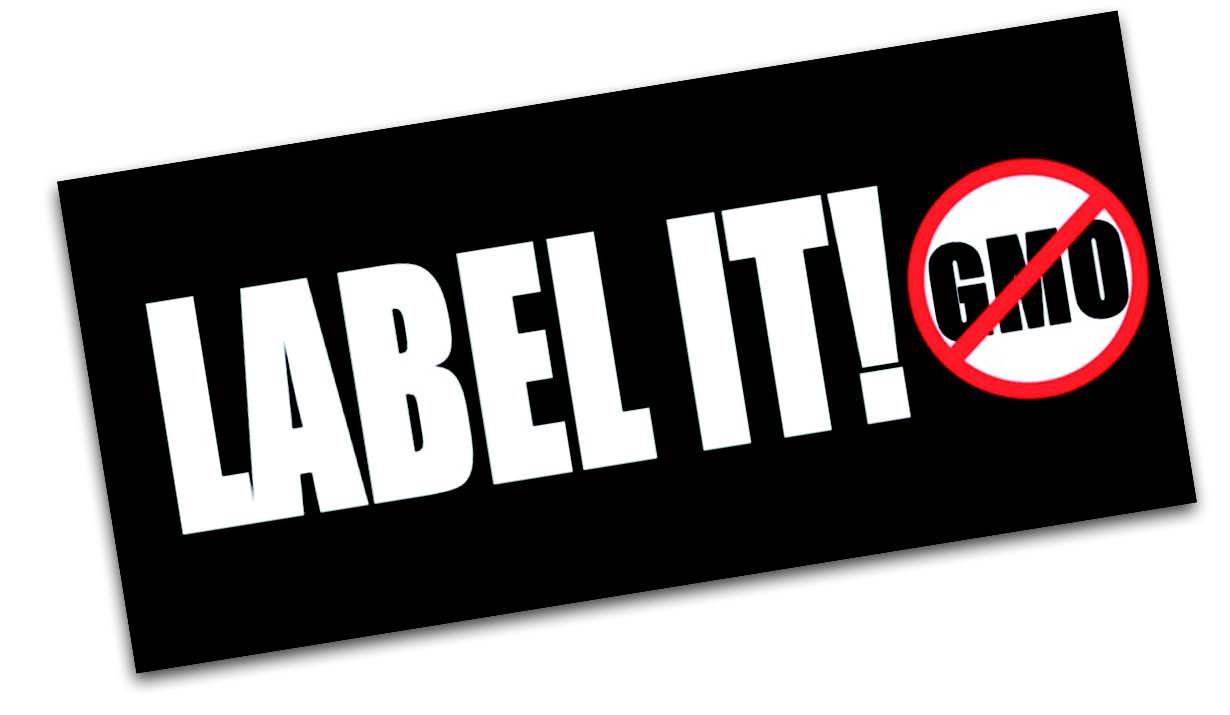As seen in Women's Lifestyle Magazine's April 2012 Edition. Read the Full Magazine.
 Photo Courtesy of Women's Lifestyle Magazine
Photo Courtesy of Women's Lifestyle Magazine
It's Not Just About Food Allergens Anymore
When you become a Tender Foodie, you start to read labels. As entertaining as this sounds, it is a necessary and regular exercise that helps keep people with food allergies safe. Labeling gives us important information, and it helps build trust with manufacturers. But as you apply this label-reading practice to your daily life, you begin to see how essential each ingredient is to your overall health. It is as important to read what’s ON the label as it is to understand what is NOT on the label.
In this article, I’ll help decipher some of the labels you see every day, and then outline important events that are happening off- label, so you can better understand your choices. It isn’t just about food allergens anymore.
ORGANIC LABELING
Organic is a labeling term that indicates that the food or other agricultural product has been produced through approved methods that integrate cultural, biological, and mechanical practices that foster cycling of resources, promote ecological balance, and conserve biodiversity. Synthetic fertilizers, sewage sludge, irradiation, and genetic engineering may not be used.
~USDA National Organic Program
 The label “Organic” is important for the many reasons stated in the above quote. One of the most important issues of our time, however, is that it’s one of the only ways to know that your products do not contain Genetically Modified Organisms (GMOs). You could also get to know your farmers and vineyard owners, learn about their practices, and trust them. It’s not scientific, but there are responsible farmers out there who grow organically, even bio-dynamically (above and beyond organic), but who do not use the USDA certification process. We’ll get into GMOs in the next section.
The label “Organic” is important for the many reasons stated in the above quote. One of the most important issues of our time, however, is that it’s one of the only ways to know that your products do not contain Genetically Modified Organisms (GMOs). You could also get to know your farmers and vineyard owners, learn about their practices, and trust them. It’s not scientific, but there are responsible farmers out there who grow organically, even bio-dynamically (above and beyond organic), but who do not use the USDA certification process. We’ll get into GMOs in the next section.
First, let’s roll up our sleeves, get out our magic decoder rings, and review organic labeling.
“100% Organic” / USDA Certified Organic Seal
Only manufacturers who have met the USDA requirements and who have been certified by a licensed agent may use this claim and use the USDA Certified Organic Seal. All agricultural aids and processing agents must be 100% organic, must not be irradiated, and may not contain GMOs, or anything (including chemicals) from the National List of Prohibited Substances.
“Organic” / USDA Certified Organic Seal
At least 95% of the product must be composed of certified organic agricultural products. The remaining 5% must consist of organically produced agricultural products if commercially available. If not, the product may consist of certain non-organic agricultural ingredients or non-agricultural or synthetic ingredients listed in the regulation. No genetically modified organisms (GMO), sewage sludge or irradiation are allowed in the remaining 5%.
Food producers can use the above terms (“Organic” & “100% Organic”) anywhere on the package, as long as it doesn’t interfere with other legal labeling requirements.
“Made with Organic Ingredients”
Up to 3 organic ingredients can be highlighted anywhere on the package. This practice is often used as a marketing tool to underscore that the product contains organic ingredients. An unlimited number of organic ingredients can be marked as such in the ingredient list. For a food producer to use the “Made with Organic Ingredients” label, however, at least 70% of the ingredients must be certified organic. The remaining 30% may be substances from any non-organic product produced without GMO, sewage sludge, or irradiation.
What Happens When a Product is Less Than 70% Organic?
If a product is made with less then 70% organic ingredients, the manufacturer is not permitted to use the term “organic” anywhere on the label, EXCEPT in the ingredient list itself (such as “organic carrots, peas, organic tomatoes”, etc.) The USDA Certified Organic Seal may not be used. The label must, however, identify the certifying agent, identify which ingredients are organic, and may include a statement or organic percentage in the ingredient information panel.
“ALL NATURAL”
. . . Ah, the wild west of food marketing. I hear people say, “But the label says that it’s All Natural? How could that be bad?”
Steve Kluting, an attorney with Varnum, who focuses his practice on food industry issues, including product labeling, explains:
While the use of "organic" and its related terms is strictly regulated, the use of "natural" and "all natural" on food labeling is much more loosely dictated under the law. To label a product as "natural", a food business does not have clear and straight-forward rules to comply with so, as a result, the grocery aisle is filled with "natural" products that a consumer might purchase despite that consumer having a definition of "natural" that's vastly different from the FDA, the USDA, or the food processor that labeled it.
In short, the FDA does not consistently define this claim, nor regulate it. It’s policy (not law) is that natural foods contain no added color, synthetic substances or flavors, and that nothing artificial or synthetic has been included in, or added to, a food that would not normally be expected to be in food. But what is considered “synthetic”? High fructose corn syrup is one example of an inconsistency and is under scrutiny by a number of courts. GMO products are also allowed with this label.
GMO LABELING
According to the USDA Economic Research Service, 90% of soy crops produced in the United States, 86% of corn and 93% of cotton are genetically modified. About 80% of our processed foods contain GMOs (think soy lecithin, sugar from GM sugar beets, and high fructose corn syrup). At least 30 countries (including Japan and the entire European Union) have either banned, demanded labeling, or have greatly restricted GMOs. According to Reuters in February 2012, China, the 2nd largest corn consumer in the world, is considering approval for GMO corn for 2013.
The U.S. has been using GMO crops since around 1996 without any labeling. There is also no standard definition of “Non-GMO” labeling. Photo Courtesy of Women's Lifestyle Magazine
Photo Courtesy of Women's Lifestyle Magazine
Petitions created by consumer and farmer groups raise important questions about the wisdom and safety of GMO crops. In March 2012, 45 Congressmen and women and 10 Senators have recognized that GMOs are a critical issue and have prompted the FDA to look at GMOs much more closely.
In January of 2000, a group of 828 concerned scientists from 84 different countries have issued an open letter to all governments, urging them to immediately suspend all release of GMO crops:
We urge the US Congress to reject GM crops as both hazardous and contrary to the interest of family farmers; and to support research and development of sustainable agricultural methods that can truly benefit family farmers all over the world.
We, the undersigned scientists, call for the immediate suspension of all environmental releases of GM crops and products, both commercially and in open field trials, for at least 5 years; … and for a comprehensive public enquiry into the future of agriculture and food security for all.
~ From an open letter to all governments Signed by 828 scientists from 84 different countries, including Majory U.S. Universities.
What is a GMO?
A GMO food contains genes replicated in a lab from other plants, animals, bacteria or even viruses that give these foods different characteristics – such as a resistance to insects, increased yield, or drought resistance. This is not crossbreeding. GMO crops are specifically engineered to withstand the direct application of herbicide, and /or to produce insecticide.
What’s Wrong with GMOs?
Some of these new characteristics sound noble and helpful. GMO manufacturers have made claims that genetic engineering will “feed the world”. However, they have released new genes into our food supply without knowing how these genetic alterations would affect human, animal or farming health.
Independent, long- term studies have exposed serious health and farming concerns. The Non-GMO Project, a non-profit organization dedicated to preserving non-GMO foods, has compiled an impressive, but frightening list of scientific research using large and small animals. According to these studies, GMOs have caused problems with immune, reproductive, and gastrointestinal systems; and have also caused organ damage and accelerated aging in these animals.
In one of only a handful of human studies performed at the University of Sherbrooke Hospital in Quebec, Canada, 93% of pregnant women had traces of insecticide present in their blood, namely, the bacterial toxin, “bacillus thuringiensis”, or Bt, found in GMO Corn. The health effects were beyond the scope of this study, but significant, none-the-less.
GMOs are an experiment, plain and simple. It is not the consumer’s responsibility to prove that GMOs are safe or to put their health on the line in the name of science. GMOs must be removed from the market and then be properly and independently tested. Until then, we have the power to act. We can demand labeling of GMO foods. The FDA has until mid-April to respond to the petition to label GMO’s. Go to www.justlabelit.org to learn more.
7 Simple Actions You Can Do Now
1. Read every label – every time
2. Know your brands
3. Stay away from the top GMO 8: corn, soybeans, canola, cottonseed, sugar beets, Hawaiian papaya, yellow squash and zucchini (buy these organic, but be aware that cross-breeding between GMO & Organic can easily occur for certain crops, like corn)
4. Go Organic whenever possible
5. Look for the “Non-GMO Project” Seal
6. Shop using the “Non-GMO Shopping Guide”
7. Ask the FDA for Labeling. Nearly one million people have sent their comments to the FDA through the “Just Label It!” campaign at www.justlabelit.org. The FDA has until mid-April to respond to the petition to label GMOs.
MORE RESOURCES
The Institute for Responsible Technology (http://www.responsibletechnology.org)
Just Label It! (http://justlabelit.org)
The Non-GMO Shopping Guide (http://nongmoshoppingguide.com)
About Elisabeth
 Writer, owner of Blue Pearl Strategies, and lover of all culinary delights, Elisabeth is a Tender Foodie. She started The Tender Palate, a website for foodies with food allergies where she consults with experts from every area of the Tender Foodie life. She believes that everyone should live deliciously and have a healthy seat at the table. Find her at www.tenderpalate.com.
Writer, owner of Blue Pearl Strategies, and lover of all culinary delights, Elisabeth is a Tender Foodie. She started The Tender Palate, a website for foodies with food allergies where she consults with experts from every area of the Tender Foodie life. She believes that everyone should live deliciously and have a healthy seat at the table. Find her at www.tenderpalate.com.